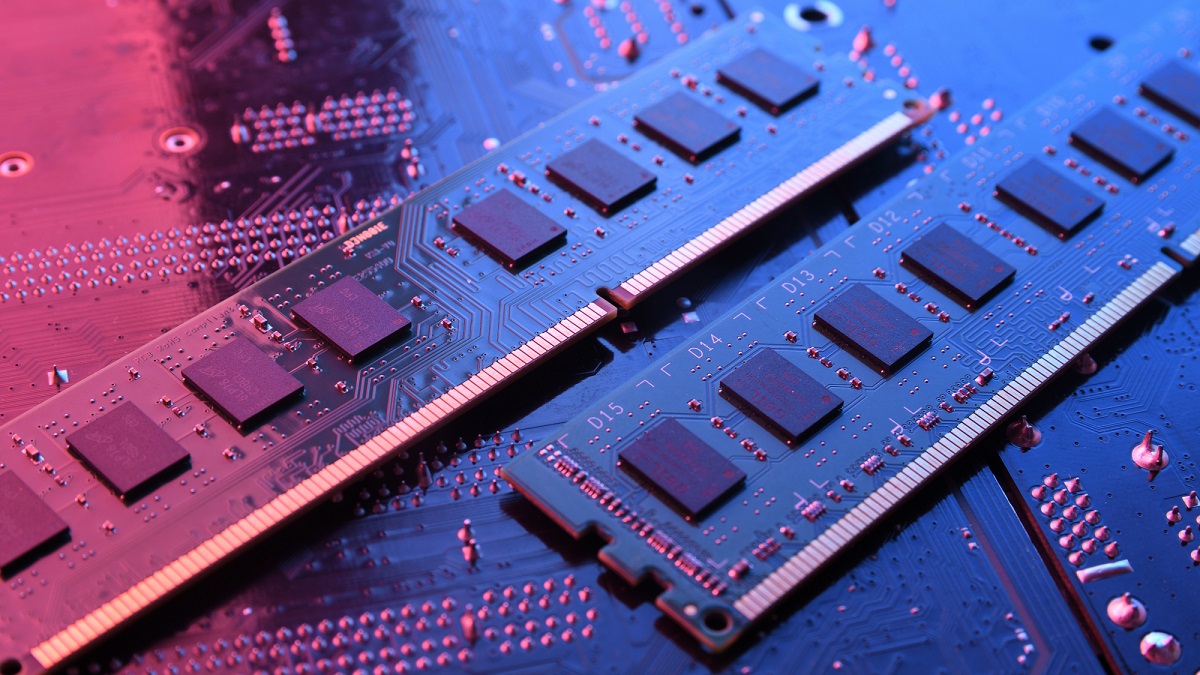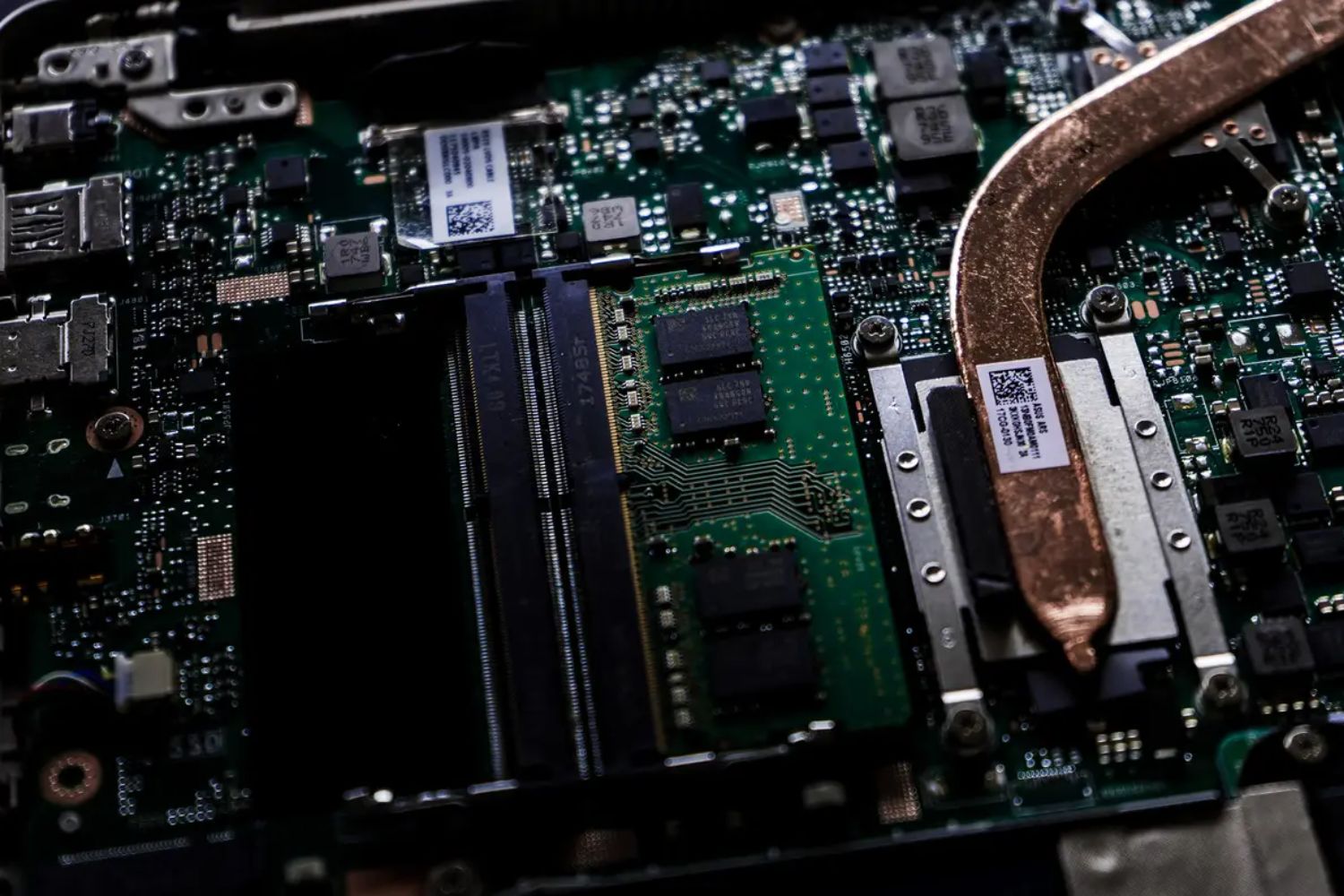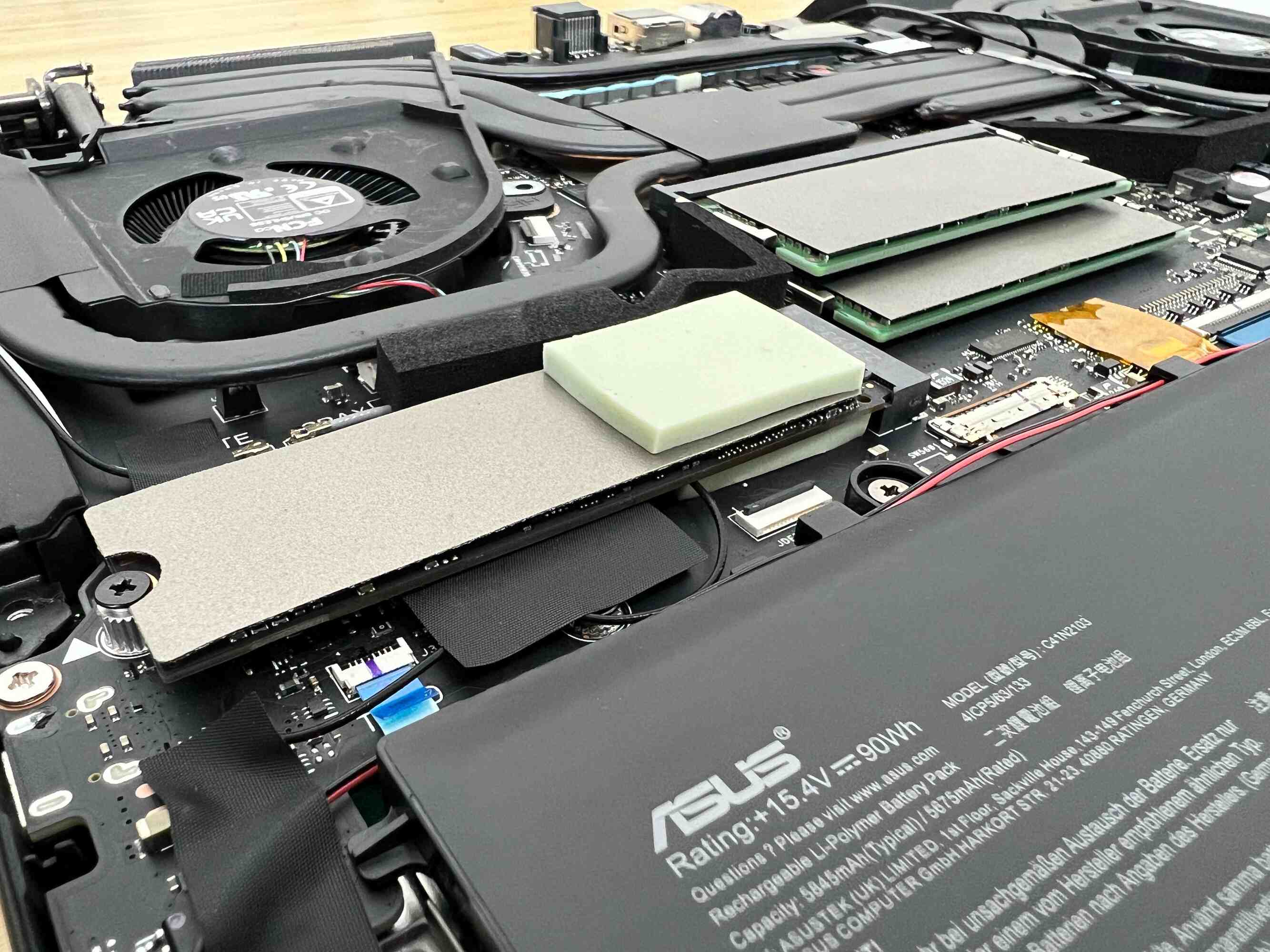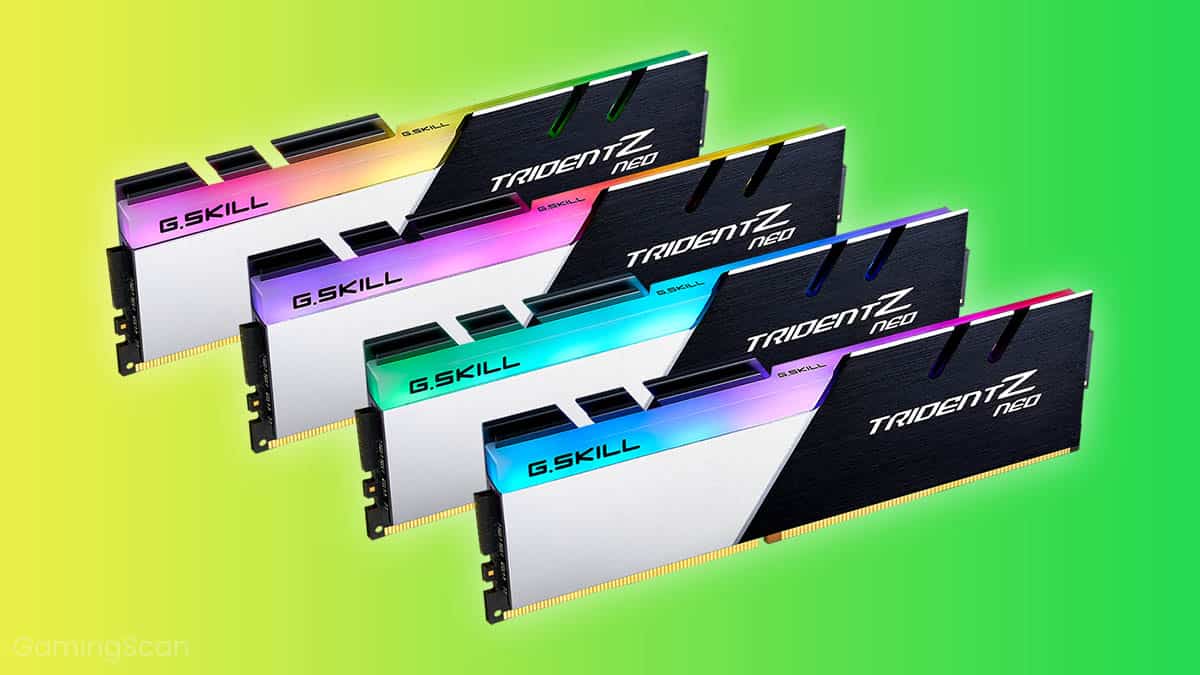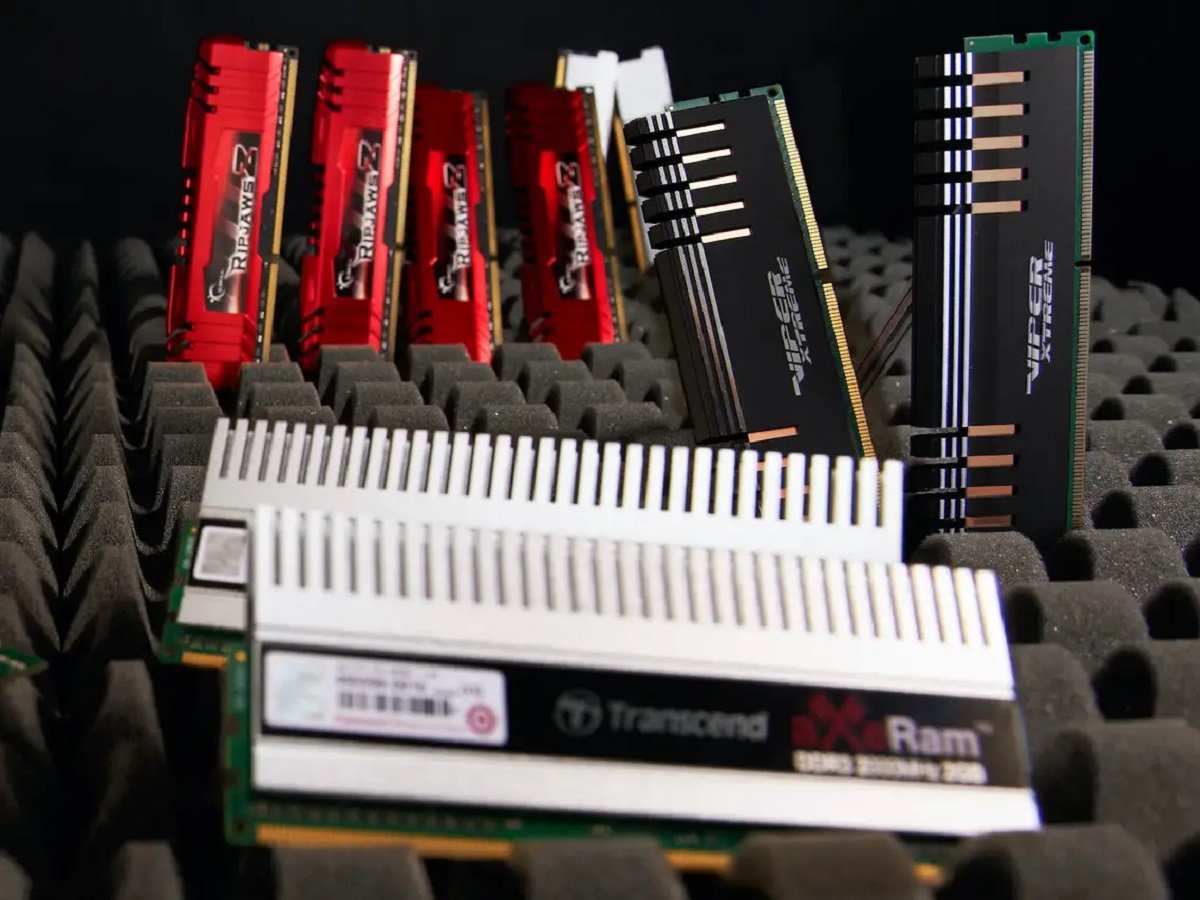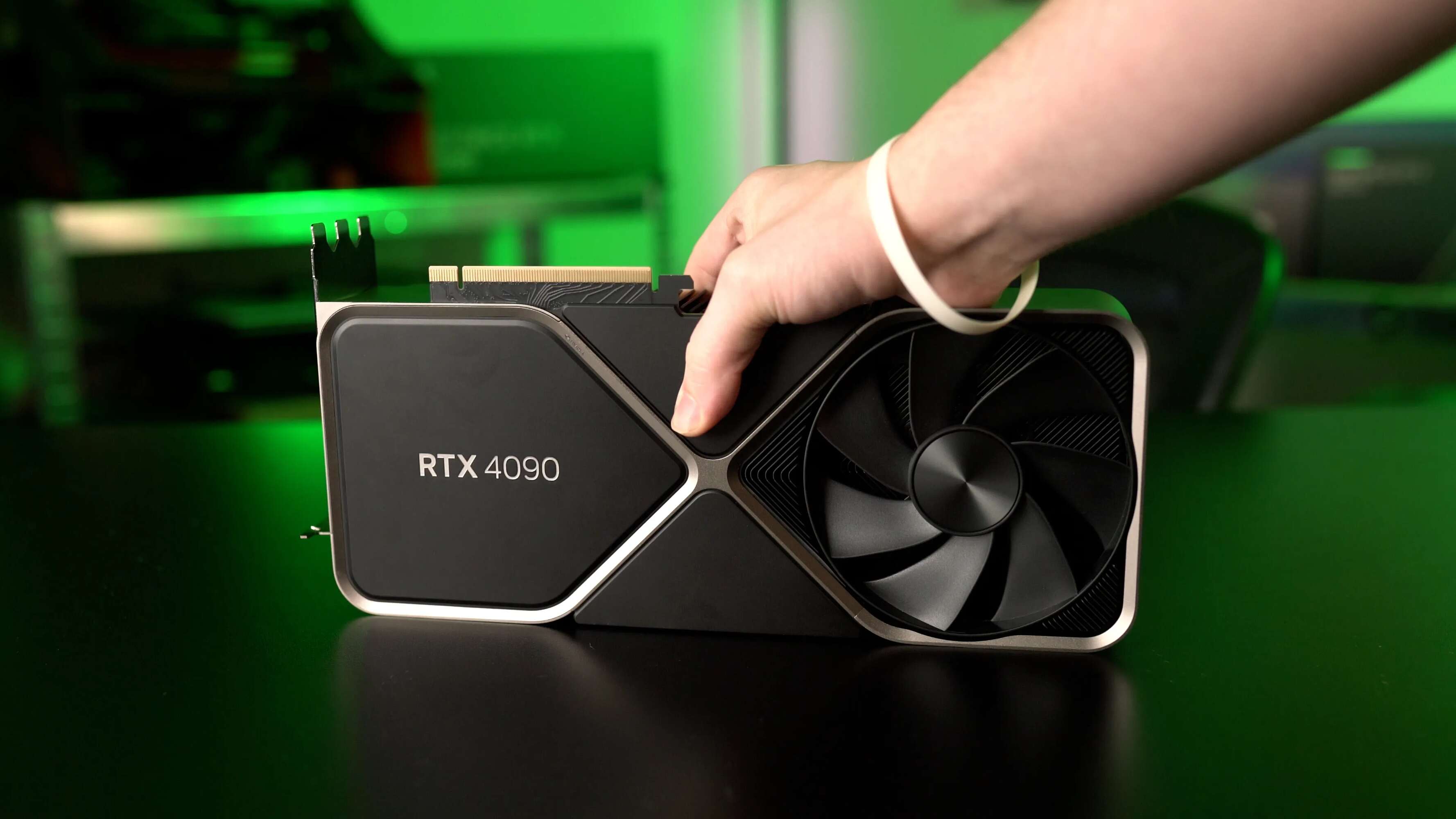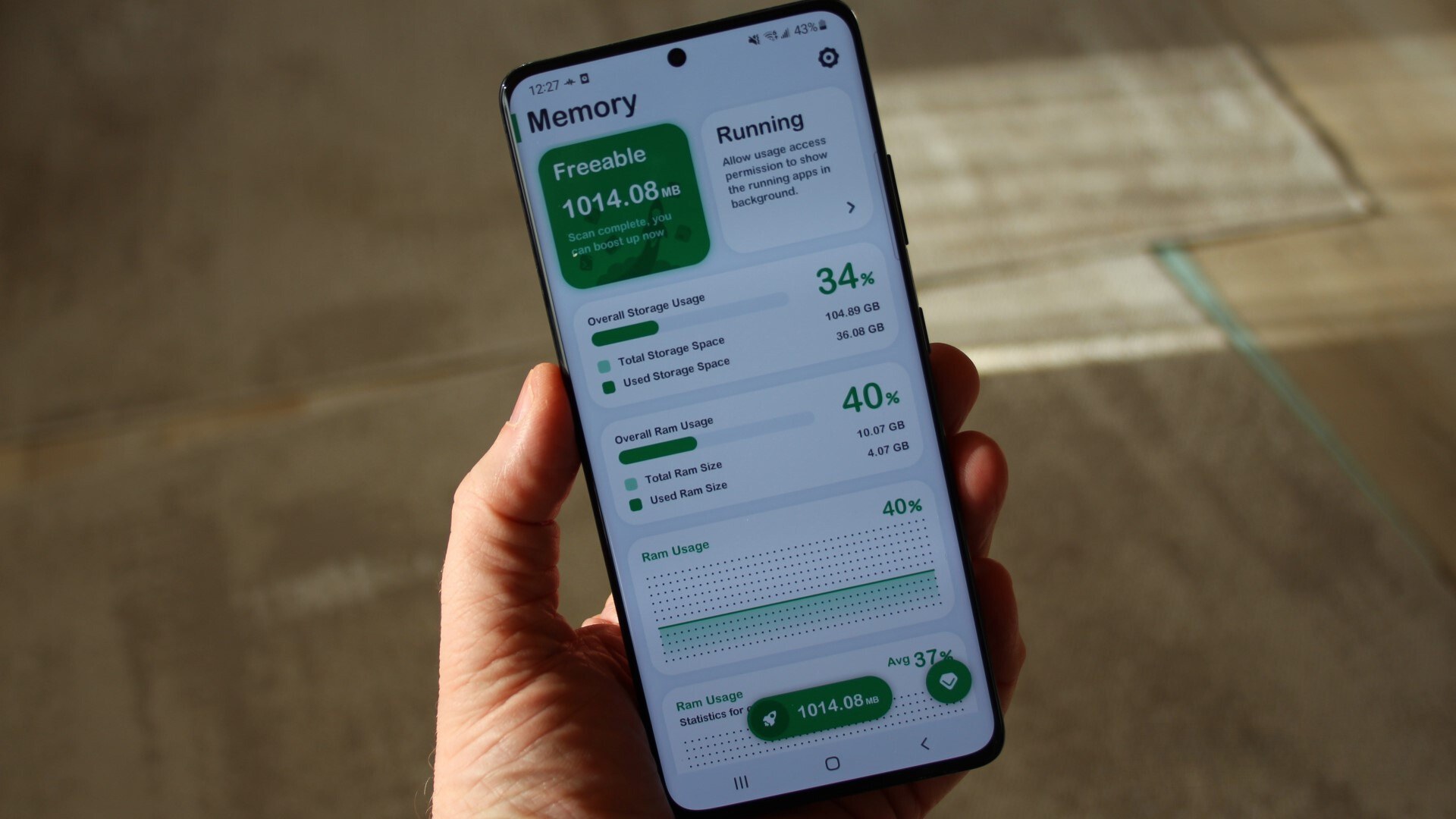Introduction
Welcome to the world of computer memory! In today’s fast-paced digital age, having enough RAM (Random Access Memory) is essential for smooth and efficient computing. RAM plays a crucial role in determining the speed and performance of your computer, making it a vital consideration when evaluating your computing needs.
RAM is the temporary storage space that your computer uses to hold data and instructions that are actively being processed. It is like the short-term memory of your computer, allowing for quick access to information and enabling multitasking capabilities.
But how much RAM do you really need? The answer to this question depends on several factors, including the specific tasks you perform on your computer, the operating system you are using, and your overall budget. It can be confusing to understand how much RAM is necessary for your needs, but fear not, as we are here to guide you through the decision-making process.
In this article, we will explore the different factors to consider when choosing RAM, as well as the recommended RAM requirements for various computing tasks. Whether you’re a gamer, content creator, or simply use your computer for basic web browsing and office tasks, we will help you determine the ideal amount of RAM to ensure a smooth and seamless computing experience.
Before we dive into the details, it’s important to note that RAM requirements can vary based on individual preferences and specific software demands. The recommendations provided here are intended to be general guidelines to assist you in making an informed decision.
Understanding RAM
Before we delve into how much RAM you need for your computing needs, let’s start by understanding what RAM actually is. RAM, or Random Access Memory, is a type of computer memory that is used for temporary storage and quick access to data and instructions.
Think of RAM as the workbench or workspace of your computer. When you open a program or file, it gets loaded into RAM so that the CPU (Central Processing Unit) can quickly access and process the information. The more RAM you have, the more data your computer can hold in its active memory, which translates into better performance and faster response times.
RAM is different from your computer’s permanent storage, such as the hard drive or SSD (Solid-State Drive), where data is stored even when the computer is turned off. Once you shut down or restart your computer, the contents of RAM are cleared, and everything that was stored is lost. RAM is considered volatile memory because it requires a constant power supply to hold data.
RAM is measured in gigabytes (GB) and is typically available in different capacities, such as 4GB, 8GB, 16GB, and so on. The amount of RAM you have can have a significant impact on your computer’s overall performance and multitasking capabilities.
It’s important to note that RAM is different from storage space. While storage space, such as a hard drive or SSD, is where you keep your files, documents, and software, RAM is where the computer actively works with and processes data. Having more storage space allows you to store more files, but having more RAM allows your computer to handle more tasks simultaneously and access information quickly.
Now that you have a basic understanding of what RAM is, let’s explore its role in a computer and how it affects various computing tasks.
The Role of RAM in a Computer
RAM plays a vital role in determining the speed, efficiency, and multitasking capabilities of your computer. It serves as a temporary storage space for data and instructions that your computer needs to access quickly during its operations. Here are the key roles that RAM plays in a computer:
1. Faster Access to Data:
When you open a program, it is loaded into RAM. This allows the CPU to quickly access and retrieve the necessary data and instructions for executing the program. The more RAM you have, the more data your computer can store in its active memory, enabling faster access and smoother performance.
2. Multitasking Capabilities:
RAM is crucial for multitasking, allowing your computer to run multiple programs simultaneously. Each program that you open requires a certain amount of RAM. Insufficient RAM can cause your computer to slow down or freeze when running multiple programs at once. Having ample RAM ensures that each program has enough space to operate efficiently, leading to better multitasking capabilities.
3. Cache Memory:
RAM also serves as a cache memory for frequently accessed data by the CPU. This cache memory helps speed up the retrieval of data, as it is much faster to access information from RAM compared to accessing it from the hard drive or SSD.
4. Virtual Memory:
RAM is closely tied to your computer’s virtual memory management. When your RAM is running low, the operating system allocates a portion of your hard drive or SSD as virtual memory. However, accessing data from virtual memory is much slower than accessing it from RAM. Insufficient RAM can lead to excessive virtual memory usage, resulting in decreased performance.
5. Gaming and Graphics Performance:
RAM plays a crucial role in gaming and graphics-intensive tasks. Modern games and graphics software require a significant amount of RAM to store and process large amounts of data, such as textures and 3D models. Insufficient RAM can result in laggy gameplay, slow rendering times, and overall poor performance when running graphic-intensive applications.
Understanding the role of RAM in your computer is important when determining how much RAM you need for your specific computing tasks. In the following sections, we will explore the factors to consider and RAM requirements for different computing activities.
Factors to Consider When Choosing RAM
Choosing the right amount of RAM for your computer involves considering several important factors. These factors will help determine the optimal amount of RAM to meet your computing needs and ensure smooth performance. Here are some key factors to consider:
1. Computing Tasks:
The types of tasks you perform on your computer play a significant role in determining the amount of RAM you need. If you primarily use your computer for basic web browsing, email, and document editing, 4GB to 8GB of RAM should be sufficient. However, if you engage in more memory-intensive activities like gaming, video editing, or 3D rendering, you will benefit from having at least 16GB or more of RAM.
2. Software Requirements:
Consider the specific software you use and its system requirements. Some applications, such as video editing software or virtual machines, may require a higher amount of RAM to operate smoothly. Check the recommended RAM specifications for the software you frequently use to get an idea of how much RAM you should have.
3. Operating System:
Different operating systems have varying RAM requirements. For example, Windows 10 recommends a minimum of 4GB of RAM for 64-bit systems, but for better performance, 8GB or more is recommended. MacOS and Linux distributions also have their own RAM recommendations. It’s important to consult the official documentation or guidelines provided by the operating system manufacturer to determine the recommended RAM for your specific operating system.
4. Future-Proofing:
Consider your future needs when choosing the amount of RAM. Technology is constantly evolving, and software requirements tend to increase over time. Investing in slightly more RAM than you currently need can help ensure that your computer remains capable of handling future software updates and new applications without slowing down or becoming outdated too quickly.
5. Budget:
RAM prices can vary based on capacity and speed. It’s essential to consider your budget when choosing RAM. While more memory is generally beneficial, it’s important to strike a balance between your computing needs and what you can afford. You may need to prioritize other components or upgrades if your budget is limited.
By considering these factors, you can determine the optimal amount of RAM for your specific needs. In the following sections, we will explore the recommended amount of RAM for various computing tasks, including gaming, content creation, basic web browsing, and multitasking.
RAM Requirements for Different Computing Tasks
The amount of RAM you need for different computing tasks may vary based on the complexity and memory requirements of the specific activities. Let’s explore the recommended RAM requirements for some common computing tasks:
1. Gaming:
If you are a gamer, the recommended amount of RAM depends on the type of games you play. For casual gaming and older titles, 8GB of RAM should be sufficient. However, for more demanding and newer games, it is recommended to have at least 16GB of RAM to ensure smooth gameplay, especially when playing at higher resolutions or running multiple applications simultaneously, such as streaming software or voice chat programs.
2. Content Creation:
Content creation tasks, such as video editing, graphic design, and 3D rendering, require a significant amount of RAM due to the large file sizes and complex operations involved. For these tasks, 16GB to 32GB of RAM is recommended. If you work with extremely large files or engage in professional-grade content creation, you may benefit from having 64GB or more of RAM.
3. Basic Web Browsing and Office Tasks:
If you primarily use your computer for web browsing, email, document editing, and other office tasks, 4GB to 8GB of RAM should be sufficient. This amount of RAM allows you to work smoothly with multiple applications and browser tabs open simultaneously without experiencing significant performance issues.
4. Multitasking:
If you are frequently engaged in multitasking, such as running multiple applications simultaneously or working with large datasets, 16GB to 32GB of RAM is recommended. This extra memory ensures that your computer can handle the load and maintain smooth performance, even with several resource-intensive tasks running at the same time.
5. Specific Software Requirements:
Some software applications, such as virtual machines or complex engineering software, may have specific RAM requirements. Consult the software’s documentation or system requirements to determine the recommended RAM capacity for optimal performance.
Remember, these are general recommendations, and your specific needs may vary. It’s always a good idea to check the system requirements of the software applications you use most frequently to ensure you have enough RAM to run them smoothly.
In the next section, we’ll explore the recommended RAM for different operating systems to help you make an informed decision.
How Much RAM do You Need for Gaming?
Gaming is a memory-intensive task that can significantly benefit from having ample RAM. The amount of RAM you need for gaming depends on various factors such as the type of games you play, the resolution at which you play, and whether you perform other tasks simultaneously while gaming. Here are some general recommendations:
Casual Gaming:
If you primarily play casual games or older titles that are not graphically demanding, 8GB of RAM should be sufficient. This amount of RAM allows the game to run smoothly without major performance issues and provides enough memory for the operating system and other background processes.
Mid-range Gaming:
For most modern games, especially at 1080p resolution, 16GB of RAM is recommended. This allows for better multitasking capabilities, enabling you to run the game smoothly along with other applications like voice chat programs or streaming software without experiencing significant frame drops or lag.
High-end Gaming:
If you are a serious gamer and play demanding AAA titles at higher resolutions (1440p or 4K) or with graphics-intensive settings, it is advisable to have 16GB or more of RAM. High-end games with detailed graphics, complex physics simulations, and large virtual worlds benefit from the extra memory allocation, ensuring smooth and stutter-free gameplay, especially when combined with other resource-hungry applications.
Streaming and Gaming:
If you plan on streaming your gameplay while gaming, it is recommended to have at least 16GB of RAM. Streaming software, such as OBS or XSplit, can consume a significant amount of memory, so having extra RAM allows for smoother streaming performance without affecting the game’s performance.
Future-proofing:
Considering that game requirements tend to increase over time, opting for more RAM, such as 32GB, can help future-proof your gaming setup. This ensures that your computer can handle upcoming games with higher system requirements without the need for immediate upgrades.
Remember that while RAM is crucial for gaming, it’s not the sole determinant of performance. The graphics card (GPU), CPU, and storage speed also play significant roles. It’s important to maintain a balanced configuration between these components to achieve optimal gaming performance.
Keep in mind that these recommendations are general guidelines, and individual gaming requirements may vary. Consider your gaming preferences, the types of games you play, and your budget when determining the ideal amount of RAM for your gaming setup.
In the next section, we’ll dive into how much RAM you need for content creation tasks, such as video editing and graphic design.
How Much RAM do You Need for Content Creation?
Content creation tasks, such as video editing, graphic design, and 3D rendering, require a significant amount of RAM due to the large file sizes and complex operations involved. Having enough RAM is crucial for smooth workflow and efficient processing. Here are some guidelines for determining the optimal amount of RAM for content creation:
Video Editing:
For video editing, the recommended amount of RAM depends on the resolution and complexity of your projects. For editing Full HD (1080p) videos, 16GB of RAM is generally sufficient. However, if you work with higher resolutions like 4K or perform advanced editing tasks such as color grading and visual effects, it is recommended to have 32GB or more of RAM to ensure smooth playback and efficient video rendering.
Graphic Design:
Graphic design software, such as Adobe Photoshop or Illustrator, can benefit from ample RAM. For basic graphic design work, 8GB to 16GB of RAM is generally adequate. However, if you work with large files, multiple layers, or complex designs, having 16GB to 32GB of RAM will provide better performance and responsiveness, allowing for smooth manipulation and rendering of graphics.
3D Rendering and Animation:
Tasks involving 3D rendering and animation, such as software like Autodesk Maya or Cinema 4D, are highly resource-intensive. These applications require a substantial amount of RAM to handle the complex calculations and rendering processes. It is recommended to have 32GB or more of RAM for smooth and efficient 3D rendering, especially when working with large scenes and complex animations.
Simultaneous Tasks:
If you frequently perform content creation tasks while running other applications simultaneously, such as having multiple design projects open or rendering videos while editing, having 32GB or more of RAM is advisable. This ensures that your computer can handle the memory demands of the multiple tasks without experiencing significant slowdowns or performance issues.
Future-Proofing:
When investing in RAM for content creation, it’s wise to consider future requirements. As software and projects become more demanding over time, having more RAM, such as 64GB, can help future-proof your system and ensure that you can handle upcoming complex projects without the need for immediate hardware upgrades.
Remember, the amount of RAM required for content creation can vary depending on the specific software, project complexity, and the size of the files you work with. Always check the recommended system requirements for your software and consider your workflow needs to determine the optimal amount of RAM for efficient content creation.
In the next section, we’ll explore how much RAM you need for basic web browsing and office tasks.
How Much RAM do You Need for Basic Web Browsing and Office Tasks?
For basic web browsing, email, and office tasks, the RAM requirements are relatively modest compared to memory-intensive activities like gaming or content creation. However, having enough RAM ensures smooth multitasking and responsiveness. Here are some recommendations for determining the optimal amount of RAM for these tasks:
Basic Web Browsing:
For light web browsing and casual internet use, 4GB to 8GB of RAM is generally sufficient. This amount of RAM allows you to open multiple browser tabs and run basic web applications without experiencing significant performance issues. However, if you frequently work with multiple browser tabs, use memory-consuming web applications, or have several browser windows open simultaneously, having 8GB to 16GB of RAM can provide a smoother browsing experience.
Email and Document Editing:
For email management and document editing tasks, 4GB to 8GB of RAM should be sufficient. Applications such as Microsoft Outlook, Gmail, and basic word processing software like Microsoft Word or Google Docs do not have high memory requirements. This amount of RAM allows for seamless email management, document editing, and working with moderate-sized files.
Spreadsheets and Data Processing:
If you frequently work with large spreadsheets or engage in data processing tasks, having 8GB to 16GB of RAM can provide better performance and responsiveness. This allows for smooth calculations, data manipulation, and optimization of spreadsheet functions without experiencing noticeable lag or slowdowns.
Multitasking:
If you often perform multiple tasks simultaneously, such as running a web browser, email client, and office applications simultaneously, having 8GB to 16GB of RAM is recommended. This extra memory allows for smoother multitasking, preventing the system from becoming sluggish when handling multiple applications at once.
Future-Proofing and Operating System:
Considering the evolving nature of software and operating systems, it’s advisable to have 8GB or more of RAM to future-proof your system. Additionally, it’s important to check the recommended RAM requirements for your specific operating system. For example, Windows 10 recommends a minimum of 4GB of RAM for 64-bit systems, but having 8GB or more improves overall performance and multitasking capabilities.
Remember, these are general recommendations for basic web browsing and office tasks. Depending on your specific requirements and the complexity of your applications, you may need to adjust the amount of RAM accordingly. By having sufficient RAM, you can ensure smooth multitasking, improved system responsiveness, and a seamless computing experience for your day-to-day tasks.
In the next section, we’ll discuss how much RAM you need for multitasking and running multiple applications simultaneously.
How Much RAM do You Need for Multitasking?
For individuals who frequently engage in multitasking, having enough RAM is essential to maintain smooth and efficient performance. Multitasking involves running multiple applications or tasks simultaneously, which can consume a significant amount of memory. Here are some recommendations for determining the optimal amount of RAM for multitasking:
Basic Multitasking:
If your multitasking needs involve running common applications simultaneously, such as a web browser with multiple tabs, email client, and office software, having 8GB of RAM is generally sufficient. This allows for smooth switching between applications and prevents noticeable performance degradation when running multiple tasks simultaneously.
Advanced Multitasking:
For more demanding multitasking requirements, such as running memory-intensive applications, virtual machines, or complex software development environments, having 16GB or more of RAM is recommended. This extra memory allocation ensures that each application has enough memory to work optimally, minimizing the risk of slowdowns or resource contention.
Professional Multitasking:
Professionals who engage in resource-intensive tasks like video editing, 3D rendering, scientific simulations, or running complex software suites may require even more RAM. In these cases, having 32GB or more of RAM ensures that the computer has sufficient memory to handle the demanding workload without compromising performance or multitasking capabilities.
Virtual Machines:
If you frequently use virtual machines to run multiple operating systems or create isolated development environments, having additional RAM is crucial. Each virtual machine typically requires its own dedicated RAM allocation. Depending on the number and complexity of the virtual machines, having 16GB to 32GB of RAM or more may be necessary to ensure efficient multitasking and optimal performance.
Future-Proofing:
When considering RAM for multitasking, it’s also important to consider your future needs. Technology and software requirements continue to evolve, and memory demands tend to increase over time. Investing in more RAM, such as 32GB or even 64GB, can help future-proof your system and ensure that it can handle upcoming software updates and resource-intensive multitasking tasks without the need for immediate hardware upgrades.
Remember, the amount of RAM you need for multitasking depends on the specific applications you use and the complexity of your tasks. By having enough RAM, you can efficiently manage multiple applications, switch between tasks smoothly, and maintain productivity without experiencing significant performance issues.
In the next section, we will discuss the recommended RAM for different operating systems to help you make an informed decision.
How Much RAM is Recommended for Different Operating Systems?
The RAM requirements for different operating systems can vary based on their resource demands and the specific tasks you perform. Here are some general recommendations for the minimum and recommended RAM for popular operating systems:
Windows:
For 64-bit versions of Windows, Microsoft recommends a minimum of 4GB of RAM. However, for better performance, especially when multitasking or using resource-intensive applications, having 8GB or more of RAM is recommended. This ensures smoother operation, faster responsiveness, and improved multitasking capabilities.
macOS:
Apple’s macOS has its own RAM recommendations based on the specific version. For example, macOS Catalina and Big Sur recommend a minimum of 4GB of RAM. However, for better performance, 8GB or more of RAM is recommended, especially when running memory-intensive applications like video editing software or virtual machines.
Linux:
The RAM requirements for Linux distributions vary based on the specific distribution and the desktop environment used. Generally, most Linux distributions can run smoothly with 2GB to 4GB of RAM. However, if you plan on running resource-intensive applications or virtual machines, having 8GB or more of RAM is advisable to ensure optimal performance.
Mobile Operating Systems:
Mobile operating systems like Android and iOS have lower RAM requirements compared to desktop operating systems. For smooth performance and multitasking on mobile devices, it is recommended to have at least 2GB to 4GB of RAM. However, if you frequently use graphics-intensive applications or run multiple apps simultaneously, having 4GB or more of RAM can provide a better user experience.
Specialized and Server Operating Systems:
Specialized operating systems and server environments may have specific RAM requirements depending on their intended use. For example, server operating systems often require larger amounts of RAM to handle multiple client connections and heavy data processing. Check the official documentation or guidelines provided by the respective operating system manufacturers for the recommended RAM specifications for these specialized environments.
These recommendations are intended as general guidelines, and your specific needs may vary. Consider your intended usage, the complexity of your tasks, and the software you plan to use when determining the amount of RAM required for your operating system. Having enough RAM ensures that your operating system can run smoothly and efficiently, allowing you to have a better computing experience.
In the next section, we’ll explore how you can determine the amount of RAM currently installed in your computer and the process of upgrading your RAM.
How to Determine the Amount of RAM in Your Computer
Determining the amount of RAM installed in your computer is a straightforward process and can be done using different methods depending on your operating system. Here are some common methods to determine the amount of RAM in your computer:
Windows:
In Windows, you can quickly check the amount of RAM installed using the Task Manager. To open the Task Manager, right-click on the taskbar and select “Task Manager” from the context menu. In the Task Manager window, go to the “Performance” tab, where you’ll find the “Memory” section. Here, you can see the total amount of RAM installed on your system.
Another way to check the RAM is through the System Information tool. Press the Windows key + R to open the Run dialog box. Type “msinfo32” and hit Enter. This will open the System Information window, where you can find the total installed physical memory under the “System Summary” section.
macOS:
In macOS, you can determine the amount of RAM installed by clicking on the Apple menu in the top-left corner and selecting “About This Mac.” In the window that opens, click on the “Overview” tab. Here, you will see the total amount of memory installed on your Mac.
Linux:
In Linux, you can use the Terminal to check the amount of RAM. Open a Terminal window and type the command “free -h” or “cat /proc/meminfo” (without the quotes) and press Enter. This will display the information about your system’s memory, including the total installed memory.
Additionally, there are third-party utilities and system information tools available that can provide detailed information about your computer’s hardware, including the amount of RAM installed. These tools can often display additional details such as the RAM type, speed, and available slots for future upgrades.
By using these methods, you can easily determine the amount of RAM installed on your computer and ensure that it matches your system’s specifications.
In the next section, we’ll discuss the process of upgrading the RAM in your computer, should you need to increase its capacity.
Upgrading the RAM in Your Computer
If you find that your computer’s current RAM capacity is insufficient for your needs, you have the option to upgrade your RAM. Upgrading the RAM can provide a significant boost to your computer’s performance and multitasking capabilities. Here’s an overview of the process:
1. Check Compatibility:
Before upgrading your RAM, it’s important to ensure compatibility with your computer’s motherboard. Check the specifications of your motherboard or consult the manufacturer’s documentation to determine the type, speed, and maximum capacity of RAM supported by your system.
2. Determine Required Capacity:
Determine the additional amount of RAM you need based on your computing requirements. Consider the tasks you perform and the recommended RAM requirements for those tasks, as discussed earlier in this article. It’s generally recommended to install RAM in matching pairs (e.g., two 8GB sticks for 16GB total), but it’s not strictly necessary.
3. Purchase Correct RAM Modules:
Purchase the correct RAM modules based on the specifications required by your computer. Consider the type (e.g., DDR4), speed (e.g., 2400MHz), and capacity (e.g., 8GB, 16GB) of RAM that your system supports. Ensure that you buy RAM modules from reputable manufacturers to guarantee compatibility and reliability.
4. Power Off and Unplug:
Before installing the new RAM, shut down your computer completely and unplug it from the power source. This ensures the safety of both you and your computer during the installation process.
5. Open the Computer Case:
If you’re using a desktop computer, open the computer case by removing the screws or any latches securing the case’s side panel. This will allow you to access the internal components, including the RAM slots.
6. Insert the New RAM Modules:
Locate the RAM slots on your motherboard. Release the clips or open the retention mechanism on each slot. With gentle pressure, align the notch on the bottom of the RAM module with the corresponding slot on the motherboard, and press it in firmly until the clips on each side snap into place. Repeat this process for additional RAM modules if necessary.
7. Secure and Close the Computer Case:
Ensure that the RAM modules are securely in place. Close the computer case by reattaching the side panel and securing it with screws or latches.
8. Power On and Verify:
Plug your computer back in, power it on, and wait for it to boot up. Once your computer has fully loaded, check the system information or use the methods mentioned earlier to verify that the new RAM is recognized and functioning correctly.
Remember to perform proper static electricity precautions, such as grounding yourself by touching a metal surface or wearing an anti-static wrist strap, to prevent damage to the RAM or other internal components during installation.
Upgrading the RAM in your computer can provide a noticeable improvement in performance, allowing you to handle more demanding tasks and multitask efficiently. If you’re unsure about the process, it’s recommended to seek assistance from a professional technician to ensure a successful upgrade.
With your newly upgraded RAM, you can enjoy a faster and smoother computing experience for your various tasks and activities.
In the final section, we will briefly summarize the key points discussed in this article.
Conclusion
Choosing the right amount of RAM is crucial for optimal computer performance and multitasking capabilities. By understanding the role of RAM and considering factors such as your specific computing tasks, software requirements, operating system recommendations, and budget, you can determine the ideal amount of RAM for your needs.
For gamers, having sufficient RAM ensures smooth gameplay and reduces lag, with 8GB to 16GB generally recommended for most games. Content creators, such as video editors and graphic designers, benefit from having 16GB to 32GB or more of RAM to handle large file sizes and complex operations. For basic web browsing and office tasks, 4GB to 8GB of RAM is usually adequate, while multitaskers may require 16GB or more to handle simultaneous applications effectively.
Different operating systems have varied RAM recommendations. Checking the recommended RAM for your specific operating system ensures smooth operation and compatibility. Determining the amount of RAM in your computer is easy through system tools like Task Manager in Windows, About This Mac in macOS, or using the Terminal in Linux.
If your current RAM capacity is insufficient, you have the option to upgrade your RAM. Ensure compatibility, determine the required capacity, purchase correct RAM modules, and follow the installation process carefully to experience improved performance and multitasking capabilities in your computer.
By considering your computing needs, the recommended RAM requirements for your tasks, and the specifications of your operating system, you can make an informed decision about the amount of RAM that suits your requirements best. Whether you’re a gamer, content creator, multitasker, or engaged in basic computing tasks, having the right amount of RAM enhances your overall computing experience.
Remember to consult the specific software requirements, consider future needs, and prioritize other components if you have budget constraints.
Now armed with the knowledge of RAM requirements, you can make an educated decision, upgrade if necessary, and ensure your computer performs at its best for your computing endeavors.







